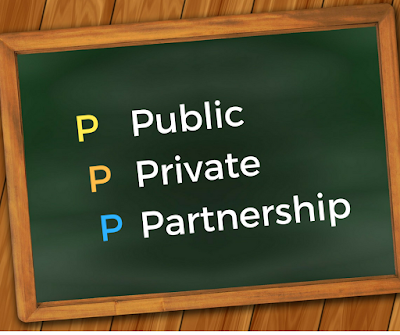PPP refers to Public Private Partnership. In India, PPP has had a mixed experience.
According to the performance, it is divided into 3 categories:
- Overall successful
- Failure for both the parties
- Failure for one of the parties e.g Nhava Sheva Port in Mumbai and NOIDA DND Toll road
 |
| PPP is a popular model of governance all over the world |
Factors that have hindered PPP in the past:
Some factors have hindered PPP Projects in the past are as follows:
- Blame game between Government and private partner on delays on land acquisition etc. and interpretation of clauses in concession agreement.
- Requests by private partner for frequent increase in user charges or seeking compensation on unforseen escalation of costs.
- No institutionalised mechanism (at least, hither to) for mid term correction in concession agreement.
Despite some negative points and past failure of some PPP projects mainly in the Highway sector, PPP could be addressed by way of mid-course correction of projects with the newly created institutional mechanism.
Why is PPP model a necessity?
Let us look back into the past and see the reasons for the necessity of the PPP model. The governments in Developed/Developing/Underdeveloped countries may not be short of funds but it can hardly afford to invest public money by procuring latest technology which shall be used by its own workforce, which is not known for its optimum efficiency. There is no doubt that following factors warrent urgent attention to improve Governance for bringing in development agenda;
- Deficit in infrastructure
- Inefficient service delivery
- Unprofessional approach.
 |
| This was the status of PPP procurement timelines in 2013 at the global level. |
Now, question arises whether the regulator should be under the sole control of concession authority or should work like an umpire. Since last letter of P in PPP embraces Partnership, the concession authority should treat Private player/concessionaire as a partner and agree to appoint a neutral ‘Regulator’ in a transparent process.
(The creative inputs are given by Ambuj Saxena, co-founder of www.bnbnation.com)